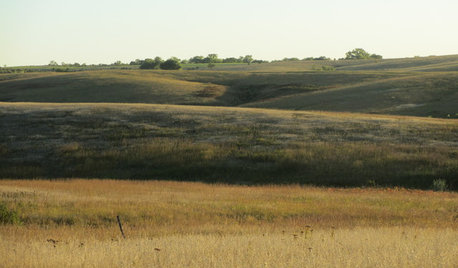Ecotourism (N. America) with native habitat restoration theme?
lrobins
20 years ago
Related Stories

GARDENING GUIDES6 Steps to Creating Your Butterfly Garden
Encourage these fanciful winged beauties to visit your garden while helping restore their fragmented habitat
Full Story
FLOWERS AND PLANTSHelp Monarchs and Other Butterflies by Planting Common Milkweed
Summer-blooming Asclepias syriaca is an important larval host plant for the monarch butterfly and attracts a number of pollinating insects
Full Story
MOST POPULARExclusive Video of Wright’s Jaw-Dropping Hollyhock House
Immerse yourself in the stunningly restored Frank Lloyd Wright masterpiece
Full Story
GARDENING GUIDES6 Plants That Beat Butterfly Bush for the Wildlife Draw
It's invasive, a nonnative and a poor insect magnet. Check out these better alternatives to butterfly bush in the garden
Full Story
GARDENING GUIDESHow to Get Your Prairie On
Have a field day with your landscape, even if you've got just a few modern containers on a paved path
Full Story
ARCHITECTURERoots of Style: Many Cultures Make Their Marks on Mediterranean Design
If you live in California, Florida or certain other parts of the U.S., your architecture may show distinct cultural influences
Full Story
GARDENING FOR BUTTERFLIESBe a Butterfly Savior — Garden for the Monarchs
Keep hope, beauty and kindness alive in the landscape by providing a refuge for these threatened enchanters
Full Story
SAVING WATERXeriscape Gardens: How to Get a Beautiful Landscape With Less Water
Conserve water and make gardening much easier with the xeriscape approach’s 7 principles
Full Story
MOST POPULARHomeowners Give the Pink Sink Some Love
When it comes to pastel sinks in a vintage bath, some people love ’em and leave ’em. Would you?
Full Story
CITY GUIDESTravel Guide: Montreal for Design Lovers
Two insiders' picks for design-minded hotels, restaurants and much more in Canada's cultural capital
Full Story





John_Blakeman
Judy_B_ON
Related Professionals
Eden Prairie Landscape Architects & Landscape Designers · Garden City Landscape Architects & Landscape Designers · Brentwood Landscape Contractors · Tempe Landscape Contractors · Bristol Landscape Contractors · Eagle Landscape Contractors · El Mirage Landscape Contractors · Fort Payne Landscape Contractors · Mastic Beach Landscape Contractors · Smyrna Landscape Contractors · Austin Decks, Patios & Outdoor Enclosures · Greeley Decks, Patios & Outdoor Enclosures · Kearns Decks, Patios & Outdoor Enclosures · Lake Morton-Berrydale Decks, Patios & Outdoor Enclosures · San Diego Decks, Patios & Outdoor Enclosureslycopus
froggy
lrobinsOriginal Author
MikeB
froggy
veronicastrum
froggy
veronicastrum
froggy
veronicastrum
veronicastrum
lrobinsOriginal Author